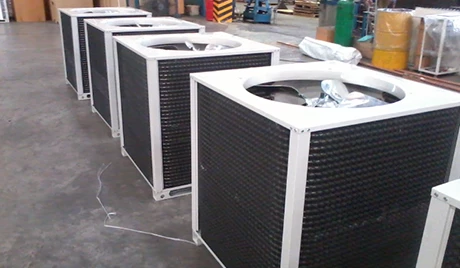Today (September 16) is International Ozone Day. This day offers the international community the opportunity to laud the achievements of the Montreal Protocol on Substances that Deplete the Ozone Layer. Since 1987, the Protocol has worked to reduce the production and consumption of ozone-depleting substances (ODS), man-made industrial chemicals that damage the earth’s ozone layer.
Yet, as has become clear over the past few years, International Ozone Day is about more than just successful ozone layer protection. Given that many substances that deplete the ozone layer also have global warming potential (GWP), the transition to the use of substances with lower or no GWP has contributed important climate co-benefits over the years. As a result, the Protocol’s agenda has increasingly focused on cross-cutting themes linked with climate mitigation and energy efficiency. From both ozone and climate perspectives, the Protocol is widely recognized as a success.
The World Bank–China Montreal Protocol partnership is a testament to this success. Over the past two decades, it has phased-out more than 219,000 tons of ozone depleting substances from sectors as varied as refrigeration, air-conditioning, foam manufacturing, aerosol production, and fire extinguishing. Since these substances have GWP, the phase-out also avoided the equivalent of 885 million tons of carbon dioxide (CO2) or having the effect of taking 184 million cars off the roads.
The Bank is now working with the Government of China to strategically address and eliminate the consumption and production of hydrochlorofluorocarbons (HCFCs), a type of ODS used in foam manufacturing, refrigeration, and air-conditioning, while averting millions more tons of CO2 impact in the atmosphere. On September 14th, the Government of China, through its Foreign Economic Cooperation Office (FECO), and the Bank launched the implementation of the first step of a multi-year HCFC production phase-out management plan that will reduce 47,000 tons of HCFC production by 2016. Given that China is the largest developing country producer of HCFCs, representing 80% of global production, the launch of HCFC production phase-down can be considered a reason to celebrate International Ozone Day. So too do the ozone and climate impacts being generated by an HCFC consumption sector phase-down project already under implementation. Together, these efforts will generate reduction of 61,685 tons of ozone depleting substances by 2016, which in terms of climate impact will mean that the World Bank–China Montreal Protocol partnership will have contributed the equivalent of taking 15.4 million more cars off the roads.
While this alone is impressive, action under the Protocol holds out the possibility for generation of even more climate co-benefits. Significant energy efficiency gains can be achieved from technology upgrades associated with ODS phase-out in applications such as air-conditioning and building cooling systems, considerations that are important for example, for cities around the world targeting a climate smart agenda. This message is particularly timely as World Bank Group President, Jim Yong Kim, and the Executive Vice President and CEO of International Finance Corporation, World Bank’s arm for the private sector, Jin-Yong Cai, are currently in China to focus on expanding collaboration on one of the most important challenges facing the country and the world today - climate change.
In my view, the Protocol, through its projects and partnership with relevant industry, is and can continue to make a marked impact in the fight to tackle climate change. One cross-cutting challenge is tied to the growth in the use of another class of chemicals, hydrofluorocarbons (HFCs), which may open newer areas of work under the Protocol. HFCs pose no harm to the ozone layer but they do have a high GWP and the growth in their use has been fueled by the phase-out of ozone depleting substances and rapid urbanization.
Certain HFCs are also Short-Lived Climate Pollutants (SLCPs), named for their relatively short lifespan in the atmosphere. Phasing-in low global warming potential and non-HFC alternatives can therefore, have a rapid net positive effect on the climate, while complementing longer term CO2 mitigation efforts. Recently, the World Bank launched a new report, Integration of Short-lived Climate Pollutants in World Bank Activities, which identifies places where the World Bank can do more through its projects to reduce the emission of SLCPs including HFCs.
International Ozone Day offers the opportunity to remind ourselves that work undertaken to protect the atmosphere also yields beneficial results at ground level that can influence, for example, the development of climate smart cities through targeted energy efficiency measures, or the opportunity to minimize HFC phase-in where possible, for example in urban, disaster recovery, health, and agriculture sectors.



Join the Conversation